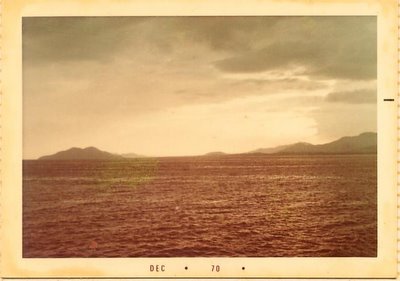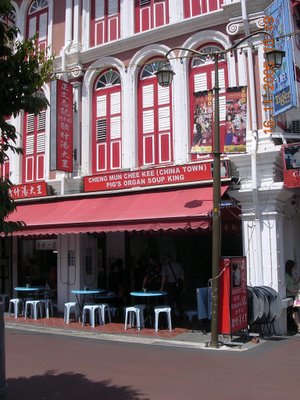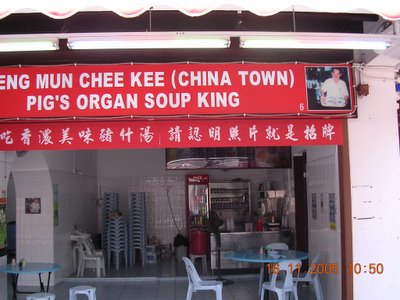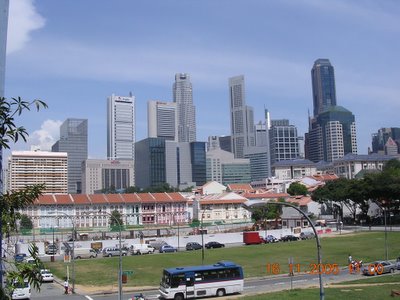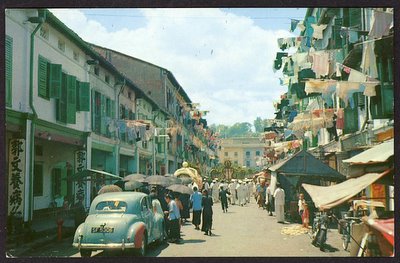I studied in Braddell Rise School (BRS) from Primary 2 to Primary 5 from 1960 to 1963. So did my siblings and my cousins (the Ng family). I don’t think any of you reading this blog have even heard of BRS. It was situated next to Mt Alvernia Hospital at the junction of Thomson Road and Braddell Road. It was a small coed, primary school. It was closed down a number of years ago.
Today its premises are occupied by the Tampines Home (MINDS). It’s quite inconspicuous. If you passed the area, you might not even notice it. Even this appears to be a temporary arrangement. A great deal of construction is going on around the area. I believe they are constructing a viaduct to join Braddell Road to the Lornie Viaduct; and hence I really do not expect this landmark to be around for long. So I went down recently and took a couple of pictures.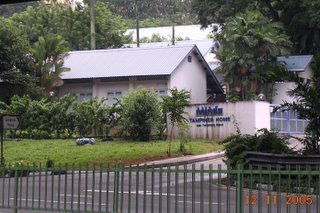

(The tall buildings in the background are part of Braddell Rise Estate)
How come Pr 2 to Pr 5 so odd? Actually I was admitted to Anglo-Chinese Junior in Barker Road in 1959. But after 1 year, my parents transferred me to BRS because ACS was too far from our home in Lorong Chuan, and my elder brother David was in BRS and could look after me. In 1964, my brother was admitted to ACS Secondary in Barker Road and so my parents tried to transfer me back to ACS Junior. However, there were no more places and so I went to ACS Primary in Coleman Street instead. It was a scary experience for a kampong kid to take a long bus ride from Lorong Chuan to North Bridge Road, alighting opposite Capitol Theatre, cross several streets to get to school. My father brought me to school on Day 1 and after that I was on my own. Fortunately, I only had to spend 1 week there because an opening came up in ACS Junior and so back I went to Barker Road.
During the 1 week in Coleman Street, I got to know a round-headed kid by the name of Simon Chu Chun Sing. One year later, we were reunited when both of us got admitted to ACS Secondary. To this day, we remain good friends, although separated by several thousand kilometers; he in windy Scotland and I in sunny Singapore. Besides the round-headed kid, I also got to know a long word, ‘courtesy’. I remember this banner with the words, “Courtesy begets courtesy” prominently displayed in the school. Everytime I drive past this building I think of these words.
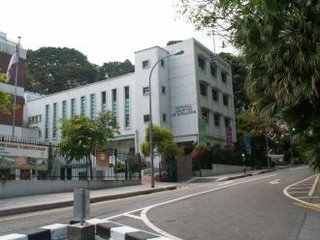 Today this building houses the Nation ArchivesComing back to Braddell Rise School - what can one recall about school more than 40 years ago? Apparently quite a bit to my pleasant surprise.
Today this building houses the Nation ArchivesComing back to Braddell Rise School - what can one recall about school more than 40 years ago? Apparently quite a bit to my pleasant surprise.
First the staff.
Our principal was a Mr Marriappan. In Primary 3 our teacher was a Mr Tan – he turned out to be a brother of my 11th Aunt. He was quite bald; which was uncommon those days. He told us, he came from a poor family and couldn’t afford shampoo and used to wash his hair with laundry soap or sabun. (I suspect his theory is not correct. Nowadays everyone can afford shampoo, and how come so many baldies?). In Pr 4, we had a Mr Chew. We liked him. He used to bring us, a few of his favorite pupils, for ‘excursions’ to places like Botanical Gardens in his Ford Prefect. He also taught us how to sing Yellow Bird. He once told us a story of Dracula – the girls were so scared, they huddled together, 2 to a chair. Wait a minute – was that Mr Tan??? But Mr Chew was also quite fierce. Many of the boys got slapped. I got slapped once; not on the face though, but the back of the head. My protective brother David witnessed it and it seemed to hurt him more than it did me.
How about the other students?
Most were kampong kids from the neighbouring areas like Kampong San Teng (Bishan), Thomson Road and Potong Pasir. Unfortunately, I can’t remember any of my friends from that era except 3 kids with Christian names. Those days, it was rare for people to have Christian names. One was my good friend Daniel who lived at Bartley Road. The other 2 were girls by the names of Freda Neo and Catherine Yap. Hope they are reading this blog.
Then of course there is sports and games.
We had 4 ‘houses’ named after the roads around us – Braddell, Lornie, Thomson and Caldecott. The sports field was located behind the school at the top of the hill where the present Assisi Home and Hospice stands. Sports Day was quite memorable. We had sack race and ‘fishing ping-pong’. The sports field was also where the boys played our favorite ‘bola hantam’ where we try to hurl the ball at our opponents – certainly not a game for the faint-hearted. I remember there was this left-handed chap from Potong Pasir, His throw was really powerful, and left an ugly red mark on our backs. Sometimes, the ball would land in the neighbours’ bungalow compounds, and some brave soul would have to scale the fence to retrieve it. The bungalows usually belonged to Caucasian expatriates and were located where the present Mary Mount Road is.
Towards the end of my stay in BRS, which was around 1964, I once peered over the fence of our sports field and saw, in the distance, a huge piece of land being cleared by bulldozers for as far as the eye could see. Bear in mind that this was 1964, and it was indeed a rare sight for this kampong boy. I didn't realize it then. I was witnessing history being made. They were building one of Singapore’s earliest HDB estates – Toa Payoh.
Another game we loved to play was kuti-kuti. These were tiny plastic animals which we used to fight each other. Basically you take turns to try to flick your animal on top of your opponent’s. The winner of course gets to keep the opponent’s animal. I am afraid it’s a bit difficult to explain, but if you were from my generation, you know what I am talking about.
Finally the Food
What trip down memory lane is complete without describing the food. One person at BRS we all loved was the friendly drinks vendor called Fong Jie. She was often dressed in white. She allowed us to mix our drinks of different colours; e.g. cherry, orange, sarsi or ice-cream soda and so on to form 1 full glass. The other person we loved was the pineapple drinks man who operated his stall outside our school gate. One glass of pineapple drink cost 5 cents. On days when we were broke, he gave us free drinks: minus the pineapple cubes of course. There was also an Indian sarabak stall outside our school. We like to watch the cook prepare the pratas and toseis. What amazed me was the water. The Indian workers who ate here simply scooped the water from a big rusty 55-gallon oil drum. Amazing isn’t it. 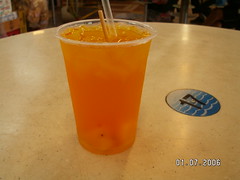
Talking of tuck shop food, ACS takes the cake. There were 3 stalls that we loved; the macaroni, beef noodle and curry rice stalls. The curry rice was a bit too expensive for me, so I can only recall the smell. As for the macaroni, it is served with minced pork – simply the best. To this day I seldom take macaroni. Why? Because I just can’t find anything close to the one at ACS.
The beef noodle came at 2 prices; 20 cents and 30 cents per bowl. For 20 cents you get 3 thin slices of beef, whilst for 30 cents you get more of course. However, even at 20 cents, we were allowed 1 additional helping of the delicious soup. But my friend Chun Sing was quite brave; he went for repeated helpings.
In 1969 I went to National Junior College. We were the pioneering batch. Well, the food there wasn’t exactly memorable (or maybe there were distractions? I don’t know.) Anyway, I only remember the long walks across the football field, up a steep slope to reach the canteen in Dunearn Technical School during the first few months when our own canteen was not ready. I often lunched with my good friend Leong Soon Wah. He often teased me for my love of pineapples. Unfortunately, we never kept in touch after JC. Must try to track him down one of these days.
So there you have it. My memories of the little known Braddell Rise School. Our school’s motto was: BE READY TO SERVE.
Now I have a confession. How do you think I am able to recall details like this from more than 40 years ago?
I still have my report book!
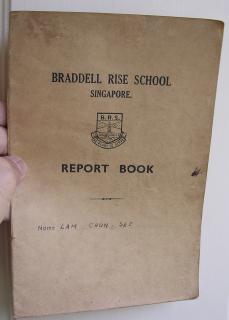
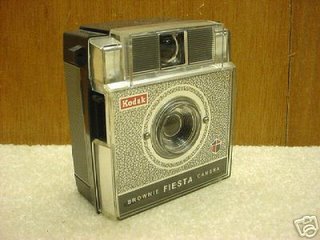 Let me tell you a bit about the cameras we used those days. The earlier pictures were taken with our first camera - a Kodak Brownie. It was an ‘auto-focus’ camera, meaning you don’t need to focus - because there was no ‘focus’ function! It had small circular window behind for you to read the number of the photo you are taking. After taking 1 picture, you have to wind the film slowly till the next number appears in the window. Now if you forgot to do this, then the next picture you take will go on top of the previous one, and you have wasted 1 valuable photo plus whatever you took earlier is lost.
Let me tell you a bit about the cameras we used those days. The earlier pictures were taken with our first camera - a Kodak Brownie. It was an ‘auto-focus’ camera, meaning you don’t need to focus - because there was no ‘focus’ function! It had small circular window behind for you to read the number of the photo you are taking. After taking 1 picture, you have to wind the film slowly till the next number appears in the window. Now if you forgot to do this, then the next picture you take will go on top of the previous one, and you have wasted 1 valuable photo plus whatever you took earlier is lost. Our second camera was a Minolta Hi-matic. We bought it around 1969 (not 1967 as I said earlier). It of course had more features like focus, aperture etc. This time, to advance the film, you need to push a lever. But if you forgot to do it, there is an ‘idiot-proof’ mechanism that prevents you from taking the next picture. Interesting eh?
Our second camera was a Minolta Hi-matic. We bought it around 1969 (not 1967 as I said earlier). It of course had more features like focus, aperture etc. This time, to advance the film, you need to push a lever. But if you forgot to do it, there is an ‘idiot-proof’ mechanism that prevents you from taking the next picture. Interesting eh?